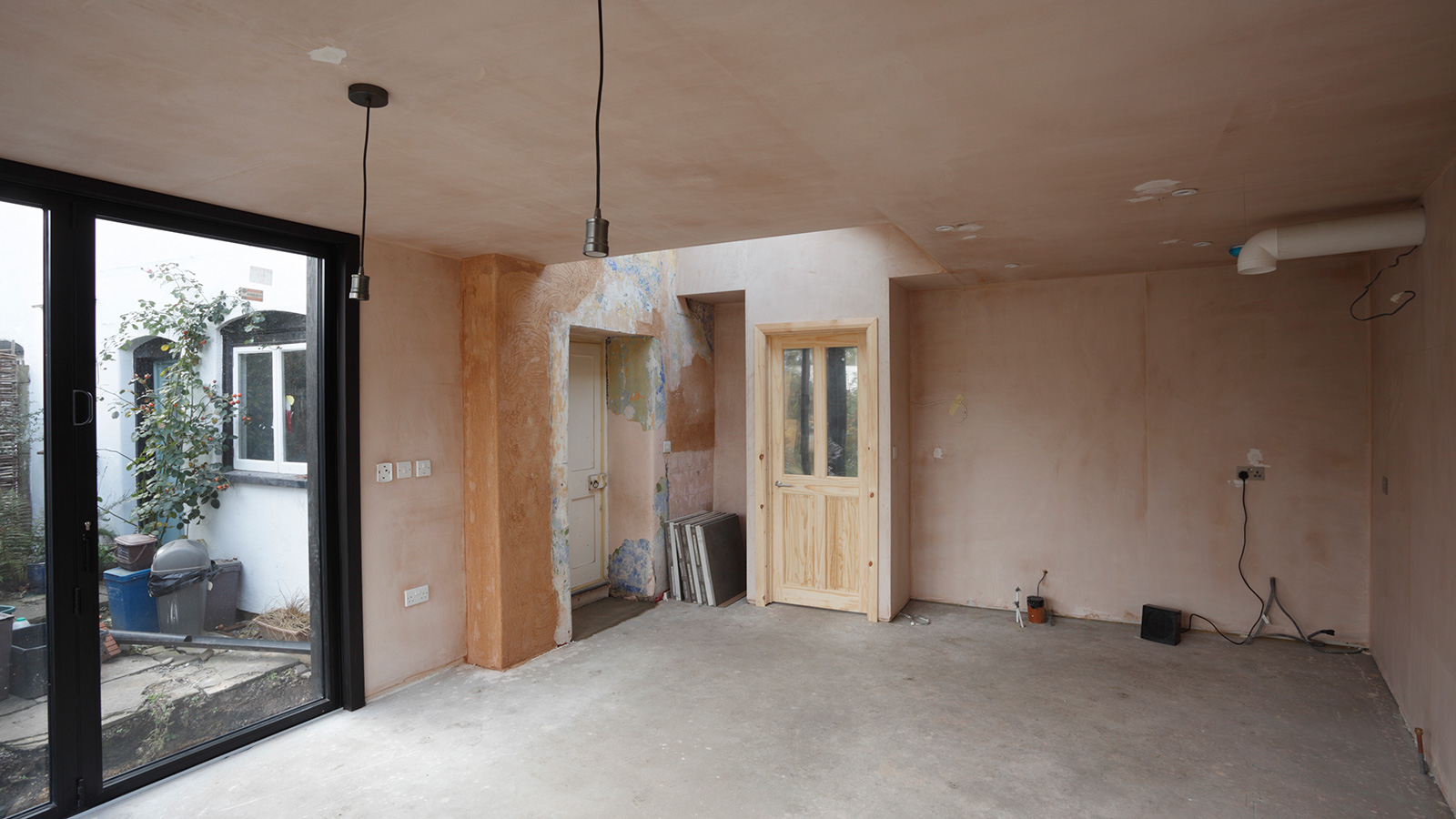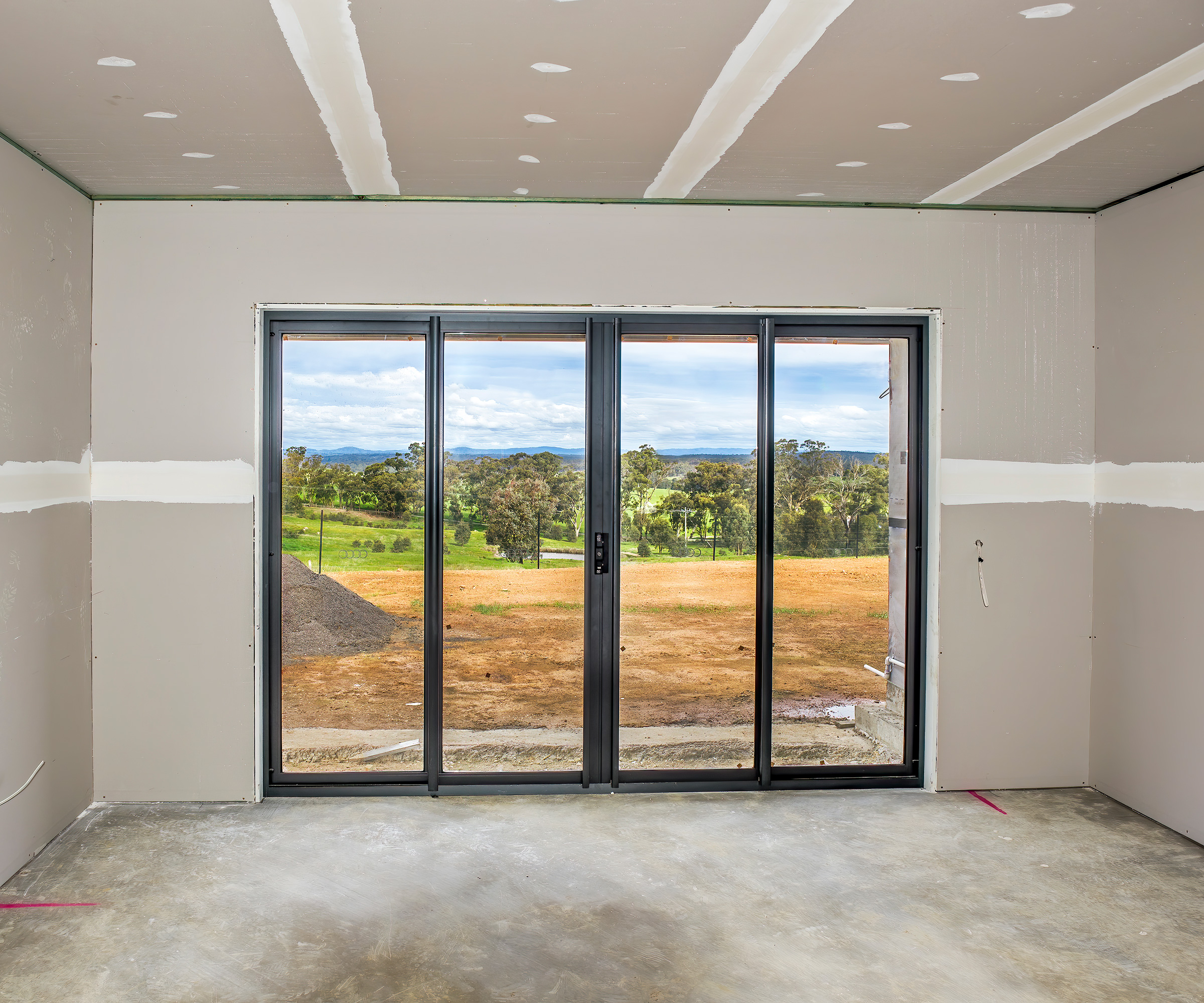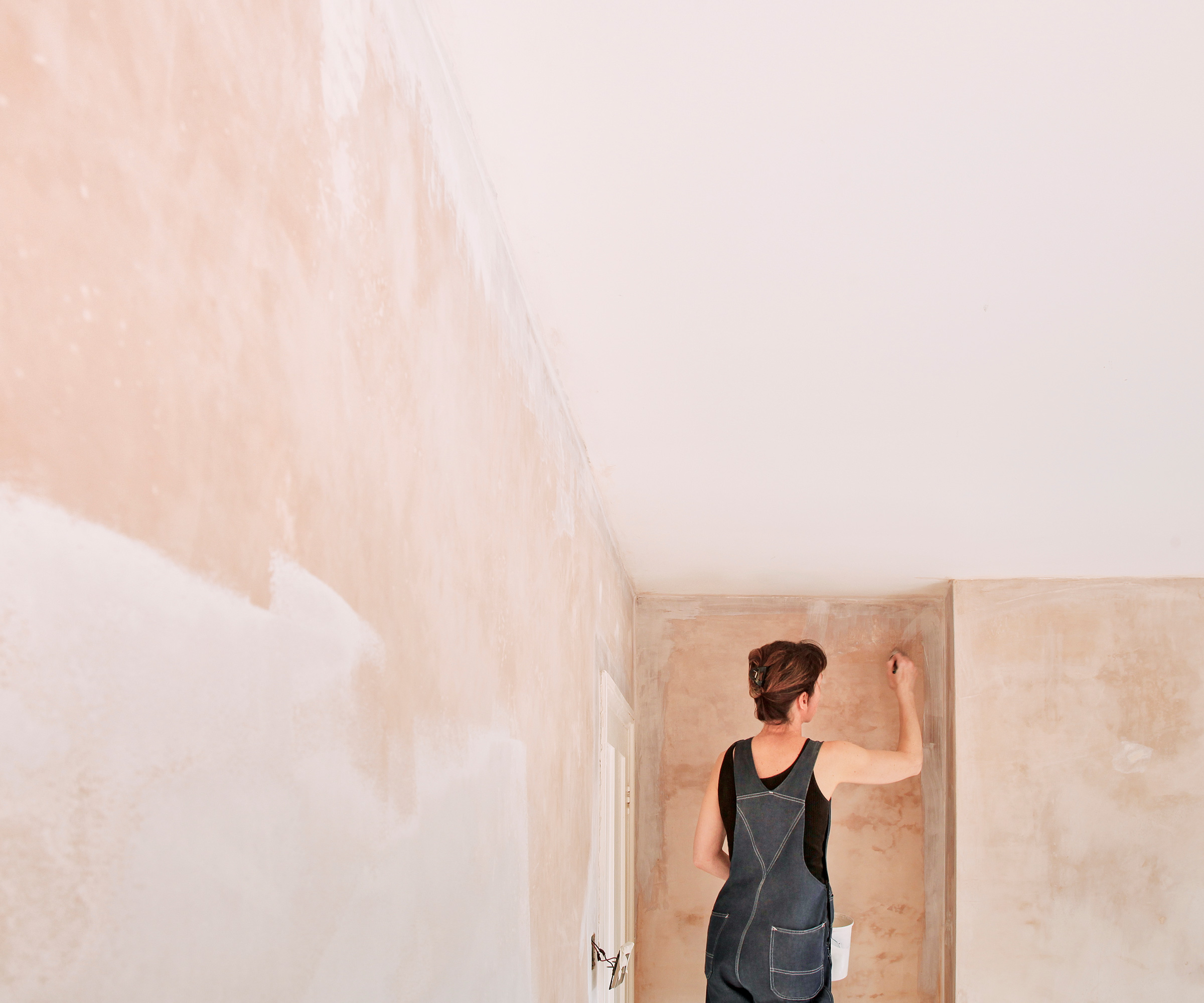How long does it take to plaster a room, including preparation?
Just how long does it take to plaster a room? Our experts reveal the kind of timescales you can expect if this is a job on your to-do list. We also have some tips on how you can speed up the process

Exactly how long does it take to plaster a room? If you are at this stage in your project, getting an idea of how long this job is likely to take will be really useful when it comes to planning the tasks that follow, such as final decoration.
While the answer is not completely straightforward, being affected by factors such as the types of plaster you are using, it is still possible to estimate how long it will take to get your walls smooth and ready to paint.
We asked the experts for their guidance on how long plastering a room takes, as well as garnering their advice on how long to expect the preparation tasks that have to be carried out beforehand will take.
How long does it take to plaster a room?
Plastering is a skilled job and, in all honesty, unless you are really confident of your skills or willing to give up a considerable amount of your time to learn how to plaster a wall, one that is generally left to the professionals – they will certainly get the job done in less time. But how long can you expect it to take for a pro to plaster a whole room?
"A plastering job can take between one to three days from start to finish. Although it is possible to skim over a room in a day, it is a good idea to prioritise the condition and stability of the existing surface," advises Alfie Burrows, director of AB Drylining. "Different surfaces require tailored preparation, drawing upon years of expertise to achieve the desired result. Ultimately, when selecting a plasterer, it's essential to prioritise experience and craftsmanship over sheer output."
Of course while understanding how long the process of plastering a room takes is useful, you will also need to take into account the preparation required before work can begin, as well as drying times.
"It is also worth being aware that you can't leave a wall half plastered at the end of a day's work as this will leave a ridge. So if you have a large room, more than one plasterer may be required to ensure walls are always completed in a day," adds Homebuilding's Website Editor Amy Willis.
How long does it take to plasterboard a room?
It won't always be necessary to plasterboard walls before plastering – for example if you are plastering over an old, previously plastered wall. If this is the case, you will need to brush down the whole wall using a stiff brush. You should then scrape off loose material and finish by sanding and washing the wall off with sugar soap. The wall will also need priming with a mixture of PVA and water. All of this is easy to do on a DIY basis, meaning you will save money on labour.
If, however, you are working with stud walls then they will need plasterboarding – something that can be done by competent DIYers of left to the professionals.
"The room size, how many doors/windows/sockets/switches and whether you are including ceilings will make a big difference on how long it takes to plasterboard a room," explains DIY expert Steve Jenkins. "As a general guideline, if it's straightforward (walls only) with little cutting involved, you should be able to board an average size room in half a day to a day. Larger rooms, including walls and ceilings, with more cutting involved will take at least a day or two. But if you’re a DIYer who's new to putting up plasterboard it will take longer."


Alfie Burrows, Director of AB Drylining, has nearly two decades of experience in the residential and commercial sector across a range of services, including dry lining, plastering, partitioning and rendering. His commitment to staying up-to-date with the latest industry trends and techniques reflects his dedication to maintaining the company's status as a trusted name in the industry.
What drying times should you expect for new plaster?
The plastering itself is only part of how long this job will take – you will also need to factor in drying times as you can't just paint walls while the plaster is still damp. So, how long does plaster take to dry?
"Understanding the setting times of different types of plaster is crucial for a successful job," says Alfie Burrows. "Base filler is used for filling cracks and small holes and takes up to two hours to dry. One coat or patching plaster will dry in three to four hours.
"Board finish plaster is used as a top coat for plasterboard and dries in just one and a half hours," continues Alfie. "Similarly, multi-finish, dry-coat and tough-coat also take the same time to set."
Base or undercoat plasters are applied to block or brickwork to prepare walls and ceilings ready for the final, smooth coat. These kinds of plasters include hardwall plaster, browning plaster and bonding plaster, all of which dry within two hours or so, according to Alife.
"Generally, it takes three to five days for plaster to dry completely. But factors such as the number of coats, the thickness of the plaster and environmental conditions can extend this up to four weeks. If you want a flawless finish, it is important to be patient and allow the plaster to dry thoroughly," warns Alfie. "Plus, this reduces the risk of issues such as damp and cracks."
"To fully dry out ready for painting or wallpapering you will need to leave until the plaster is an even pale pink," advises Steve Jenkins. "This can take days or even weeks depending on conditions."

Steve Jenkins is a freelance content creator and was previously the DIY content editor for Homebuilding & Renovating.
He is a keen DIYer with over 20 years of experience in transforming and renovating the many homes he has lived in. He specialises in painting and decorating, but has a wide range of skills gleaned from working in the building trade for around 10 years and spending time at night school learning how to plaster and plumb.
Can you speed up plaster drying times?
Many people are keen to find out if there is anything they can do to reduce plaster drying times in order to get started on the fun job of decorating or painting a wall – but it is generally best to let plaster dry out naturally.
"Rushing the process with dehumidifiers or heaters can do more harm than good and, in some cases, lead to potential structural issues," points out Alfie Burrows. "That is why it is crucial to plan carefully and allow the plaster to dry naturally."
FAQs
What happens if you paint plaster before it is dry?
It is a really bad idea to begin painting newly plastered walls before they have fully dried out.
While it might have set, or cured, that doesn't mean it is dry enough to paint or hang wallpaper. If you do either of these decorating jobs before the plaster is ready, moisture will get trapped within the plaster leading to flaking paint and even mould issues.

How long does lime plaster take to dry?
Traditional lime plaster takes longer than modern plasters to both apply and to fully dry and cure.
This is partly due to the fact that it is generally applied in three coats, each of which has to fully dry out before the next can be added. The first coat (sometimes referred to as a scratch coat) can be expected to take 10 or so days to set. That said, in cold or damp conditions, it could take as long as four weeks.
The second coat often takes a further 10 days to set, and the final coat approximately four days.
Fancy something different to a standard plaster finish? How about considering a clay plaster instead? As the name suggests, these plasters use clay as the binding agent and have a beautifully rustic, warm textured matt finish that, in many cases, won't require painting.
Get the Homebuilding & Renovating Newsletter
Bring your dream home to life with expert advice, how to guides and design inspiration. Sign up for our newsletter and get two free tickets to a Homebuilding & Renovating Show near you.
Natasha was Homebuilding & Renovating’s Associate Content Editor and was a member of the Homebuilding team for over two decades. In her role on Homebuilding & Renovating she imparted her knowledge on a wide range of renovation topics, from window condensation to renovating bathrooms, to removing walls and adding an extension. She continues to write for Homebuilding on these topics, and more. An experienced journalist and renovation expert, she also writes for a number of other homes titles, including Homes & Gardens and Ideal Homes. Over the years Natasha has renovated and carried out a side extension to a Victorian terrace. She is currently living in the rural Edwardian cottage she renovated and extended on a largely DIY basis, living on site for the duration of the project.

